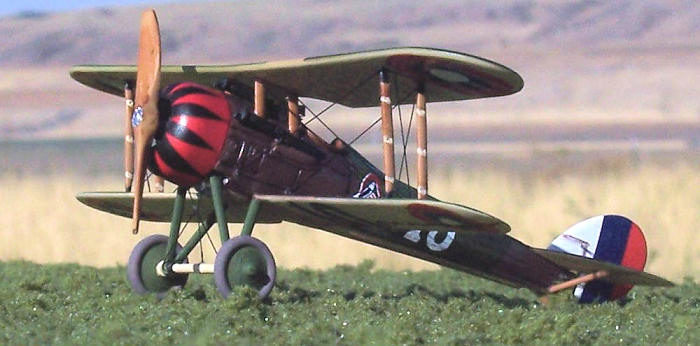
Revell 1/72 Nieuport 28C-1
| KIT #: | H-70/04189 |
| PRICE: | Current issue is $6.75 MSRP |
| DECALS: | Three options in the old kit, one in the recent issue |
| REVIEWER: | Kyle Bodily |
| NOTES: | A very good old kit. |

| HISTORY |
When the
Contrary to popular and a somewhat
religiously held belief; the Pilots of the 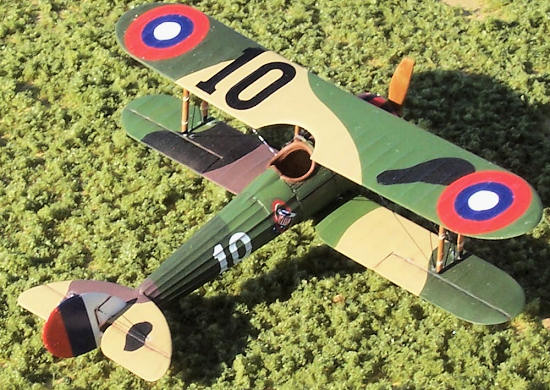 landing
speed that was not good when trying to land on a wartime airfield.
In flight maneuvers the SPAD was nowhere near
as maneuverable as the Nieuport.
In fact Arch Whitehouse said, “it was foolish
to duel for any length of time with Fokker, Albatros and Pfalz single-seaters.
The routine was to attack from advantageous
levels and if the pass did not come off, it was wise to remember the rugged
construction of the SPAD and keep on diving.”
landing
speed that was not good when trying to land on a wartime airfield.
In flight maneuvers the SPAD was nowhere near
as maneuverable as the Nieuport.
In fact Arch Whitehouse said, “it was foolish
to duel for any length of time with Fokker, Albatros and Pfalz single-seaters.
The routine was to attack from advantageous
levels and if the pass did not come off, it was wise to remember the rugged
construction of the SPAD and keep on diving.”
When the Pilots of the Lafayette
Escadrille stationed at the Ham Aerodrome learned that the Nieuport firm was
now producing the Nieuport 28, all the pilots wanted to do was dump their
SPADs and get Nieuport 28s.
For a while the pilots of the Lafayette
Escadrille flew around happy until a note from the Issy-Le-Molineaux
Nieuport factory arrived and said that all of the Nieuport 28s were grounded
and that they were to be withdrawn from service.
The
After the Nieuport 28s were pulled
from French service the Russians asked to buy them since the Russians had
always had a hard time getting aircraft to support it’s air service.
The French put Russian insignia on the
Nieuport 28s and boxed them up for the trip to
About a year after the Nieuport 28s
were pulled from front line service.
The USAAS abandoned all hope of the American
made miracle fighter.
Now the USAAS wanted the SPADs but 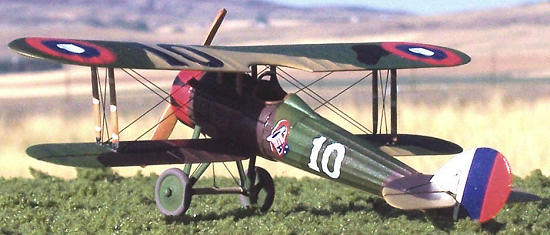 Escadrilles.
So the USAAS bought up all of the best French
fighters that they could get.
That would be the Nieuport 28.
Since the aircraft already had the Russian
red blue and white roundels painted on them and these are the same as the
Escadrilles.
So the USAAS bought up all of the best French
fighters that they could get.
That would be the Nieuport 28.
Since the aircraft already had the Russian
red blue and white roundels painted on them and these are the same as the
The first missions the USAAS flew were without guns since they didn’t even have them yet. Later they had enough to mount one gun per aircraft. As has been said since the down of time “You go to war with what you have not what you want”.
The Nieuport 28 was very maneuverable in the classic tradition of other Nieuport fighter aircraft. It incorporated some features of the Sopwith Snipe. If it had it been built a little more sturdily it may have become an important fighter in the air war. Instead it developed very dangerous structural weaknesses, including its habits of shedding fabric in steep dives and a propensity for engine fires.
| THE KIT |
Also see the preview of the most recent boxing by Scott
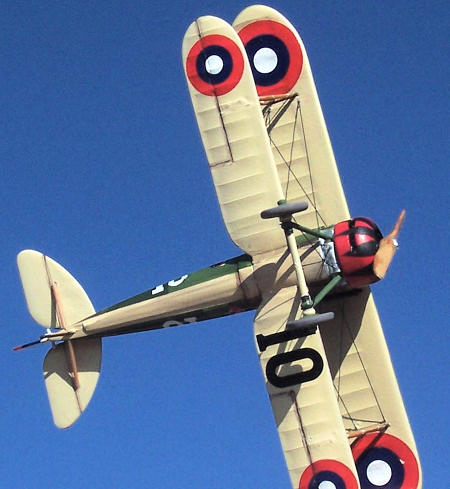 Here
is another oldie but a goody.
27 pieces parts of childhood memories.
This is an old Revell kit.
One of my earliest and most treasured memories
from way back in the fog of time is building this exact kit with my
Grandfather.
In fact I must have built this kit a minimum of
eight times, more likely fifteen in all.
Here
is another oldie but a goody.
27 pieces parts of childhood memories.
This is an old Revell kit.
One of my earliest and most treasured memories
from way back in the fog of time is building this exact kit with my
Grandfather.
In fact I must have built this kit a minimum of
eight times, more likely fifteen in all.
Like most kits of this era they are dated and not considered the pinnacle that they once were. This kit's moldings were in a brown plastic. The newer kits are gray while the original kits were light blue (among collectors the color of the plastic is important for collecting proposes). Whichever color of plastic you get, except for the stand that was in the earlier kits they are all the same. As a kid I use to give these stands to my little brother so he could use them as enemy airplanes and since the stands were far less maneuverable I would always shoot him down.
Now this kit is not perfect. If you want to improve it you can get a datafile and make it better. For me, only one thing really needs to be fixed and it is the shape of the kits engine cowl. The kits cowl is too square in profile. The actual cowl is more rounded.
| CONSTRUCTION |
Well if you want a difficult build you won’t find it here…..unless you want to make it difficult……but that’s up to you. I decided to just build this one straight out of the box.
You don’t get a detailed cockpit and
I didn’t want to put the pilot in but on the other hand at this scale it’s
hard to see into that little
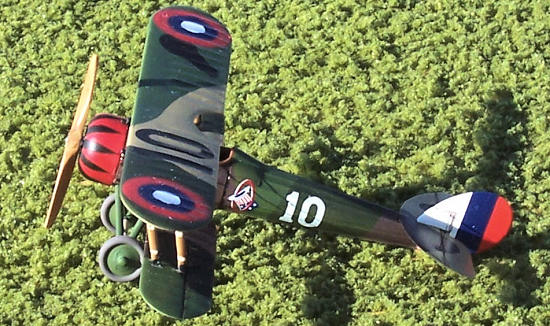 opening.
Other then the pilot’s seat you just can’t see
much.
In short I left the cockpit empty except for the seat.
The only real work I did on this model was the
cowl. It needs to be rounded.
A few minutes with a sanding stick will take
care of this problem.
If this is not for you, you can get the
Rosepart resin replacement cowling and you’re good.
I’ve done it both ways but this time I just
sanded the original cowl down with the help of a drummel.
After I got the shape I wanted I carefully cut
the cooling holes into the cowling and viola I was done.
I think that a somewhat simple bit of work like
this can sometimes makes a big difference.
opening.
Other then the pilot’s seat you just can’t see
much.
In short I left the cockpit empty except for the seat.
The only real work I did on this model was the
cowl. It needs to be rounded.
A few minutes with a sanding stick will take
care of this problem.
If this is not for you, you can get the
Rosepart resin replacement cowling and you’re good.
I’ve done it both ways but this time I just
sanded the original cowl down with the help of a drummel.
After I got the shape I wanted I carefully cut
the cooling holes into the cowling and viola I was done.
I think that a somewhat simple bit of work like
this can sometimes makes a big difference.
I got everything together and drilled the little holes for the rigging. Then I painted the whole thing. Lastly I put on the top wing. A somewhat simple process since the struts are already set in an inverted “U” that makes getting them right a lot easier. For rigging I used 2lbs fishing line but if you don’t want to do rigging just leave it off the model still looks really good unrigged.
| COLORS & MARKINGS |
The paint is the standard French
five-color camouflage of beige, light green, dark green, brown and black.
The kit was the old collector’s choice kit with
decals for three aircraft.
I used the kit decals and they went on great.
Considering that the decals were printed in the
70s I was a happy camper.
Last of all I weat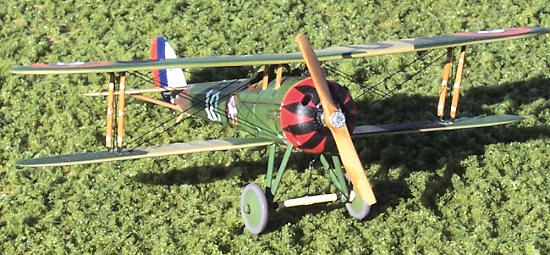 hered
the little create using water based paint that is very thin.
I like to layer the colors until I get the
degree of grime that I want and seal it with clear lacquer.
hered
the little create using water based paint that is very thin.
I like to layer the colors until I get the
degree of grime that I want and seal it with clear lacquer.
| CONCLUSIONS |
This was a very fun kit to build. I’ve always liked the Ni.28 and I always keep my eyes open for this kit at model shows. It is inexpensive (my local hobby shop sells the new Revell of Germany kit for $5.25) and can be built by just about anyone. It is the only 1/72 scale model kit of this fighter that I know of.
If you don’t really want to build one for yourself then the next time you’re at a hobby shop pick one up for your kids or grandkids and build a memory that they just might carry with them for some forty-five years or so.
| REFERENCES |
”French Aircraft of the First World War” by Dr. James Davilla and Arthur M. Soltan, Flying Machines Press